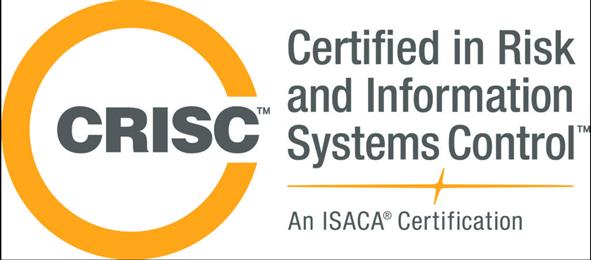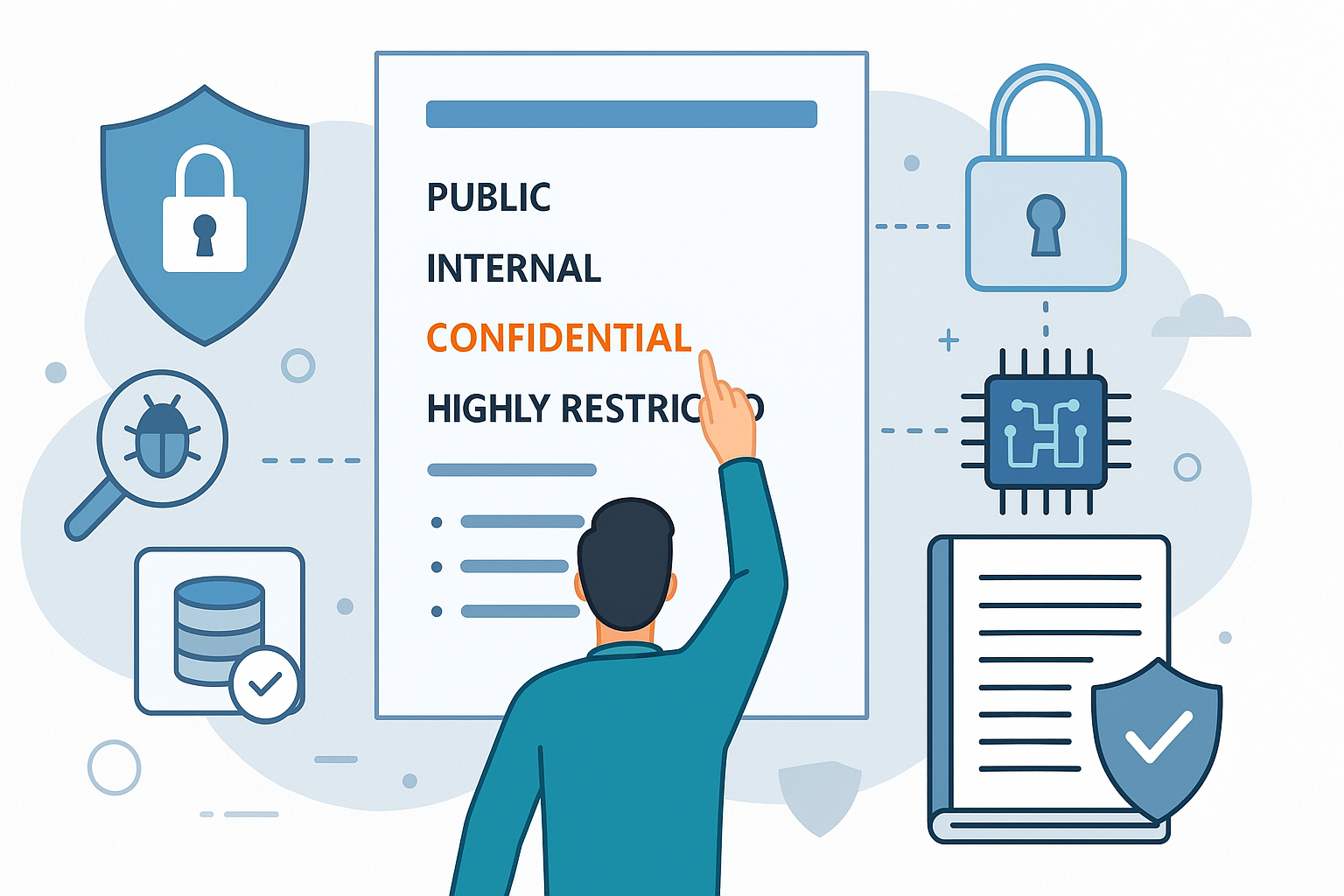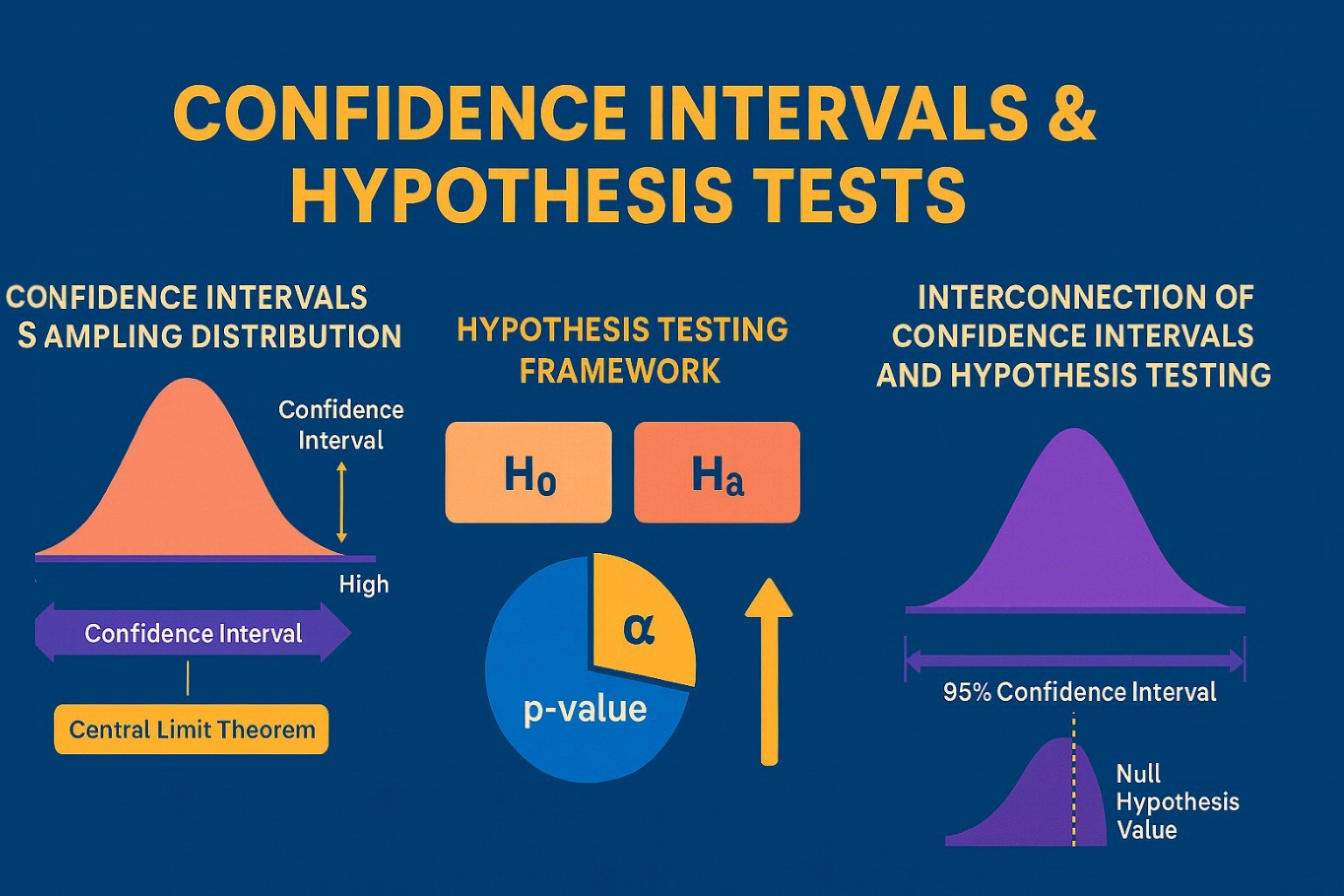CRISC Practice Exam Sample Questions and Answers

CRISC Certification
The CRISC certification validates your skills in information system control and risk management. The CRISC is a vendor-neutral certification provided by ISACA. This certification helps you to information system control and mitigate risk in your enterprise. To take this certification exam, you must have five years of experience in the IT risk management domain in any of the five areas; risk assessment, identification, and evaluation, risk monitoring, risk response, Information system control, monitoring and maintenance, design, and implementation. This course is suitable for risk professionals, compliance professionals, project managers, business analysts, etc.
Benefits of CRISC Certification
CRISC certification is beneficial to IT professionals and employers. As a CRISC certified professional, you can evaluate security-related threats, assess the vulnerabilities of people, processes, and technology of your organization. With the help of this certification, you can combat and arrest cybercrimes and protect your organization’s critical processes and data-related assets. Employers also prefer to hire you when compared to other risk professionals because you hold a prestigious certification.
Benefits to your Career
By holding a CRISC certification, you will travel on a secured IT security career path. It is constantly on the high-paying IT jobs. The salary range for the CRISC certification is $94,000 - $182,000. The average salary is $132,000. You may be paid $73-$76 per hour. Some companies which may hire you are Deloitte, General Electric, Gordan Food Services, Visa, Paysafe, Th Walt Disney Studios, etc. Apart from the monitory benefits, your certification is accepted globally. You will be preferred over your peers. You can begin a lucrative career in information security and control, Risk management, and reap benefits of being certified in CRISC.
The Certified Information Security Manager certification is the second-highest paying certification as per the survey conducted by Global Knowledge. According to the CIO magazine in 2018, it is no #1 in the highest paid IT certifications. The CRISC certification has accreditation under ISO/IEC 17024:2012. This accreditation is done by the ANSI (American national standards institute). Enterprises are facing risks of any nature, and IT professionals lack risk management skills. IT professionals can work on technologies but lack the skills to predict and mitigate risks. The CRISC certification helps the IT professionals to acquire the skills of evaluating and identifying IT risk to accomplish the business goals and objectives. The certification assesses the domain knowledge in IT risk identification, IT Risk assessment, Risk response, and risk mitigation, risk control, and monitoring and reporting.
CRISC Test Questions to Achieve Passing Score
We have compiled CRISC practice exam questions and answers covering all the domains and keeping the weight in mind. To keep you informed, the weightages are 28% for IT Risk identification, 28% for IT Risk Management, 23% for Risk response and mitigation, 22% for Risk and control monitoring and reporting. You will pass the CRISC exam by reading our CRISC sample questions and answers. The aim of crisc exam dumps to help you by taking crisc practice test and to have self-assessment at the subject before attending crisc exam. Wish you all the best.
Exam details: CRISC
Exam name: Certified in Risk and Information Systems Control
Duration: 240 minutes
No. of questions: 150
Passing score:
Validated against: www.isaca.org.
Format: MCQ
Exam cost: $595
--------------------------------------------------------------------------------------------------------------------------------
1. From the below-mentioned option which is the most important reason for maintaining key risk indicators?
A. Key risk indicators help in avoiding the risk.
B. Risk reports are needed on time.
C. Fine-tuning is required for complex matrix.
D. There are changes in treats and vulnerability from time to time.
E. All of the above
F. None of the above
Explanation- Treats and vulnerability changes from time to time by the maintenance of key risk indicators. It ensures that KRIs continue to store the effectiveness of these changes. Option A is incorrect because avoiding the risk is one possible risk response and it is dependent upon KRI reporting not on maintenance of KRI. Option B is incorrect because most of the matrix need optimization for their sensitivity. But if we see the most important objective of KRI maintenance it is for ensuring that KRIs continue to store the effective capture of the changes that occur in treats and vulnerability over time. Option C is incorrect because it is the requirement of business not the requirements of KRI maintenance.
-----------------------------------------------------------------------------------------------------------------------------
2. What action must be taken in the following situation with the risk response that is identified during the monitoring and controlling process of the project?
Mr. Amit is working as the project manager of a project whose final compliance process is just finished. The signing of the project completion is also done by the project customers. The thing left in the project is the administration process for closure activity. In the project, some huge sheets could affect the project. But Mr. Amit and his project team took out the solution for that. The solution does not require any extra cost or time.
A. Mr. Amit must mention the response in the project management plan.
B. Mr. Amit must mention the risk response in the risk management plan.
C. Mr. Amit must include the risk response in the lessons learned database of the organization.
D. Nothing as the risk responses are already included in the register of project risk.
E. All of the above.
Explanation- the risk responses do not exist of till the time it is not included in the organization's lessons learned database. This can be used by other project managers if they find the same relevant in their project too. Option A is the incorrect option because the response is never included in the project management plan. But in the risk response plan that is made during the project must be entered into the lessons learned database of the organization. Option B is incorrect because risk responses are included in the risk response plan but not at the situation. It is included after the whole project is completed. Option D is incorrect because if anything is included in the register of the project list then the people working on other projects could not have the look for the same.
-----------------------------------------------------------------------------------------------------------------------------
3. From the below-mentioned option which of the following is the best description for the risk event at the mentioned situation?
Mr. Amit was the project manager of the ABC project. He found that a risk event is there on his project which will save $1 lakh of the project cost if the event has occurred.
A. The risk event should perform mitigation for taking advantage of the saving.
B. This risk event must be accepted because the reward of $1 lakh will outweigh the fear of the project.
C. Mr. Amit must avoid the risk of saving the potential and taking full advantage.
D. This event is one of the opportunities for the project and Mr. Amit should exploit this opportunity.
Explanation- the risk is having the quality of saving the money of project cost. Hence it is an opportunity for a project. The correct action from the above option that can be taken by Mr. Amit is exploiting this opportunity. The exploit response is the best strategy that can negate risk or the fear that appears in the project. There may be the selection of risk having positive effects on the project and it is the total wish of the organization whether they want to use this opportunity and realized it. This is a correct example of an exploit response. Options A and C are incorrect because mitigation and avoidance is the negative response used in the situation where the event is having a negative risk. But the situation mentioned above symbolizes the positive risk event. Because it will provide $1 lakh. Hence, we cannot mitigate or avoid it. Option B is incorrect because accepting risk means no action is taken relative to a particular task in which loss will be accepted if occurs. The risk event is only exploited if it brings opportunities.
--------------------------------------------------------------------------------------------------------------------------------------------------------
4. In the below-mentioned situation, what is the best reason for duplicating risk identifications session?
Mr. Jay was working as a project manager for a large construction project. The duration of the project was 18 month and the cost will be $7 lakh 50 thousand for completion. Mr. Jay is working with the project team stakeholder and experts for identifying the risk within the project before the working of the project is started. Management has a question of why Mr. Jay has scheduled many of the risk identification meetings in the project duration rather than starting the meeting for project planning.
A. The iterative meetings provide permission for all stakeholders to take part in the meeting and the risk identification process for the whole duration of 18 months of project phases.
B. The iterative meeting permits all the project managers for discussing the risk event that has already passed in the project and which has not occurred but there is a chance of happening.
C. The iterative meeting permits the project manager and the risk identification participants for identifying newly discovered risk, events throughout the 18 months that is the phase of the project.
D. The iterative meeting permits the project manager for communicating the pending risk event at the time of project Execution.
Explanation- risk identification is one of the iterative processes because the new risk is evolved or become a part of the process which is called project progress through its lifecycle. Option A is incorrect because stakeholders are always encouraged for participating in the process of risk identification. But the choice is not the best one. Option B is incorrect because risk identification pays attention to the discovery of the new risk event. Not to the events which did not happen. Option D is incorrect because the iteration of risk identification takes place for identifying new risk events.
-------------------------------------------------------------------------------------------------------------------------------------------------------
5. From the below-mentioned option what will be the risk priority number for the situation?
Mr. Shah is the risk official in the XYZ company. Mr. Shah was supposed for prioritizing various risks the rating of the risk was dependent on detection, severity, and occurrence. They are rated as an accuracy rating of 4, severity rating of 5 and detection rating of 6.
A. 100
B. 120
C. 130
D. 150
Explanation- for calculating the risk priority number following steps must be followed,
1. Identifying the potential failure effects.
2. Identifying the causes of potential.
3. Creating a link between each cause of identified potential.
4. Failure modes are identified.
5. Severity, occurrence, and detection are access.
6. Performing the score assessment with the help of a scale of 1-10 i.e, low to the high rating for scoring this assessment.
7. Computing the RPN for a particular failure mode as severity is multiplied by occurrence and detection, i.e,
RPN = severity X occurrence X detection,
= 4 X 5 X 6
=120
Hence the correct option B.
--------------------------------------------------------------------------------------------------------------------------------------------------------
6. From the below-mentioned option, what is the most important use of key risk indicators?
A. KRI helps to provide an early warning signal.
B. KRI helps in analyzing the trend and to enable the documentation.
C. KRI helps to indicate the tolerance and the appetite of the enterprises' risk.
D. KRI helps to provide a look at the risk events that have occurred in the past.
Explanation- These indicators are highly active, relevant and process a high probability for predicting or indicating the important risk that has occurred.
--------------------------------------------------------------------------------------------------------------------------------------------------------
7. From the below-mentioned option which of the following role career are used for deciding the Enterprise's key risk indicators?
A. Human resource
B. Senior management
C. Business leaders
D. Chief financial officers
E. A and B
F. B and C
G. All of the above
Explanation- option B and C are correct because the leader and seniors play an important role in determining the risk indicators which will be monitored and be considered as key risk indicators. Options A and D are incorrect because they perform an overview of a common risk view. But they are not included in deciding for the risk-based situation.
-----------------------------------------------------------------------------------------------------------------------------------------------------
8. From the below-mentioned option which is not included in the requirement for creating a risk scenario?
A. The value of an asset is determined.
B. Potential threats and vulnerabilities that can cause loss.
C. To determine the value of the business process which is at risk.
D. Determining the causes and effects.
Explanation- option A, B, and C are necessary options that are required for creating the risk scenario. Cause and effect analysis determination is a predictive and diagnostic analytical tool. It is used for exploring the root causes or factors to positive or negative effects. It is used during the process of exposing risk factors. Hence the correct option is D.
--------------------------------------------------------------------------------------------------------------------------------
9. From the below-mentioned option which of the following are the factors that are focused during risk evaluation?
A. Likely hood
B. Threat
C. Vulnerability
D. All of the above
E. None of the above
Explanation- likely hood is one of the primary factors that is focused at the time of risk evaluation. Hence the correct option is A.
-------------------------------------------------------------------------------------------------------------------------------------------------------
10. From the below-mentioned option which of the following is not included in the risk response process?
A. Rechecking the results of risk analysis.
B. To implement change management.
C. To give the priority to risk response option.
D. For implementing the risk reaction plan.
Explanation- implementing the change in management is not included in the risk response process.
--------------------------------------------------------------------------------------------------------------------------------
11. From the below-mentioned option which of the following defines by the project management plan for the availability of share information on project risk?
Mr. Shahu is working as a project manager for ABC incorporation. Does Mr. Shahu have the various risk that will affect the requirements of the various stakeholders?
A. Risk Management plan
B. Resource management plan
C. Communication management plan
D. Stakeholder management strategy.
Explanation- option C is the correct answer as a communication plan defines on behalf of risk management who will be available for sharing the information on risk and responses in the whole project. The communication management plan has the aim of defining the communication necessity for the project and the method of circulating the information. The communication plan creates a structure that guides communication like and updates the necessary changes required for communication. Option A is incorrect because the resource management plan does not define risk communication. Option B is incorrect because it does not define who will share information on project risk. On the other hand, it defines identification, analysis and monitoring and responses. Option D is incorrect because the stakeholder management strategy does not take any address risk communication.
------------------------------------------------------------------------------------------------------------------------------------------------
12. From the below-mentioned option which of the following describes the utility of the risk at it's best?
A. The finance incentive at the back of risk
B. The potential opportunity of the risk.
C. It explains the mechanism for the working of risk.
D. The usefulness of the risk for the individual and the group.
Explanation- utility of risk is best defined by the usefulness of a particular risk to an individual. Moreover the same can be utilized by two different individuals in two different ways. The financial outcome is one of the methods that is used for measuring potential value for taking a risk. Option A is incorrect because the determination of financial incentive is one the method used for measuring the potential value for taking the risk but is not valid for determining the valid definition of utility o the risk. Options B and C are not valid definitions.
--------------------------------------------------------------------------------------------------------------------------------------------------------
13. From the below-mentioned option mention the level for the following situation at which the risk will be identified?
A. High risk
B. Moderate risk
C. Extremely high risk
D. Low risk
Explanation- moderate risk is at the noticeable failure fear the success of goal decided. Option A is incorrect because at high risk the situation is that the goal is not met. Option C is incorrect because at extremely high-level risk the situation is that has a huge effect on the enterprise and has the failure of goals with severe consequences. Option D is incorrect because low risk means certain goals are unsuccessful. Hence the correct option is B.
--------------------------------------------------------------------------------------------------------------------------------------------------------
14. From the below-mentioned option which of the following monitoring tool is best for ensuring that it can look after the growth of an Enterprise?
A. Scalability
B. Sustainability
C. Customizability
D. Impact on performance
Explanation- monitoring tools must keep up the growth of an Enterprise with an upward graph. It must anticipate the goals of complexity or transaction volume. This is ensured by the scalability criteria of the monitoring tool. Option B is incorrect because of its focuses on the changing speed by matching it with technology application and infrastructure to be effective over time. Option C is incorrect because if you want any software to be effective it must be according to the customization that satisfies the specific need of an enterprise. Hence, customizability ensures that the end-user can adopt the software. Option D is incorrect because the impact of performance has no connection with the ability of monitoring tools for keeping up the growth of an enterprise. Hence the correct option is A.
-------------------------------------------------------------------------------------------------------------------------------------------------------
15. Miss. Richa is the project manager of the ABC organization. Mr. Richa is having the project team and they are working on a project on the task for completing the qualitative risk analysis. By performing the analysis Richa encourages the team for starting the Grouping of identifying a risk that is caused due to common causes.
From the below-mentioned option which of the following is the primary Advantage for group risk by command causes during the qualitative risk analysis.
A. It will create Risk categories that will be unique for each project.
B. It will save time for collecting the related resources, for example, the project team members for analysis of the risk event.
C. It assists in establishing the responses for effective risk
D. It has the project team to realize that area of the project that is most laden with risk.
Explanation- by grouping the risk by categorizing the project team will help you to develop effective risk responses. Related risk event has mostly a similar factor that can be addressed by a single risk response. Hence the correct option is C.
Find a course provider to learn CRISC
Java training | J2EE training | J2EE Jboss training | Apache JMeter trainingTake the next step towards your professional goals in CRISC
Don't hesitate to talk with our course advisor right now
Receive a call
Contact NowMake a call
+1-732-338-7323Enroll for the next batch
Latest blogs on technology to explore

From Student to AI Pro: What Does Prompt Engineering Entail and How Do You Start?
Explore the growing field of prompt engineering, a vital skill for AI enthusiasts. Learn how to craft optimized prompts for tools like ChatGPT and Gemini, and discover the career opportunities and skills needed to succeed in this fast-evolving indust

How Security Classification Guides Strengthen Data Protection in Modern Cybersecurity
A Security Classification Guide (SCG) defines data protection standards, ensuring sensitive information is handled securely across all levels. By outlining confidentiality, access controls, and declassification procedures, SCGs strengthen cybersecuri

Artificial Intelligence – A Growing Field of Study for Modern Learners
Artificial Intelligence is becoming a top study choice due to high job demand and future scope. This blog explains key subjects, career opportunities, and a simple AI study roadmap to help beginners start learning and build a strong career in the AI

Java in 2026: Why This ‘Old’ Language Is Still Your Golden Ticket to a Tech Career (And Where to Learn It!
Think Java is old news? Think again! 90% of Fortune 500 companies (yes, including Google, Amazon, and Netflix) run on Java (Oracle, 2025). From Android apps to banking systems, Java is the backbone of tech—and Sulekha IT Services is your fast track t

From Student to AI Pro: What Does Prompt Engineering Entail and How Do You Start?
Learn what prompt engineering is, why it matters, and how students and professionals can start mastering AI tools like ChatGPT, Gemini, and Copilot.

Cyber Security in 2025: The Golden Ticket to a Future-Proof Career
Cyber security jobs are growing 35% faster than any other tech field (U.S. Bureau of Labor Statistics, 2024)—and the average salary is $100,000+ per year! In a world where data breaches cost businesses $4.45 million on average (IBM, 2024), cyber secu

SAP SD in 2025: Your Ticket to a High-Flying IT Career
In the fast-paced world of IT and enterprise software, SAP SD (Sales and Distribution) is the secret sauce that keeps businesses running smoothly. Whether it’s managing customer orders, pricing, shipping, or billing, SAP SD is the backbone of sales o

SAP FICO in 2025: Salary, Jobs & How to Get Certified
AP FICO professionals earn $90,000–$130,000/year in the USA and Canada—and demand is skyrocketing! If you’re eyeing a future-proof IT career, SAP FICO (Financial Accounting & Controlling) is your golden ticket. But where do you start? Sulekha IT Serv

Train Like an AI Engineer: The Smartest Career Move You’ll Make This Year!
Why AI Engineering Is the Hottest Skillset Right Now From self-driving cars to chatbots that sound eerily human, Artificial Intelligence is no longer science fiction — it’s the backbone of modern tech. And guess what? Companies across the USA and Can

Confidence Intervals & Hypothesis Tests: The Data Science Path to Generalization
Learn how confidence intervals and hypothesis tests turn sample data into reliable population insights in data science. Understand CLT, p-values, and significance to generalize results, quantify uncertainty, and make evidence-based decisions.